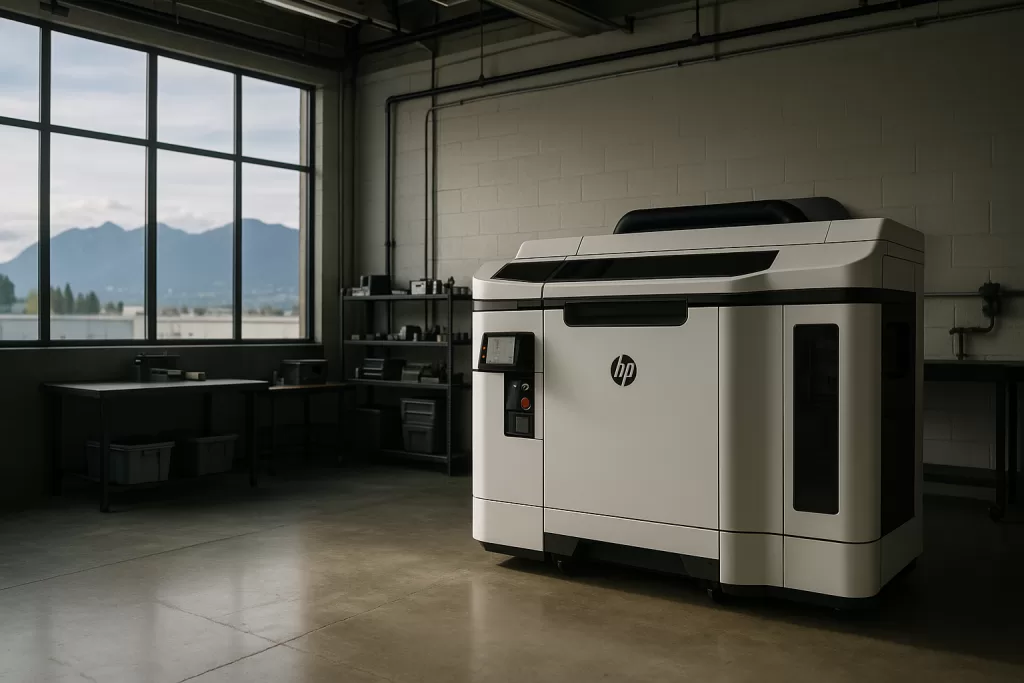Explore industrial 3D printing with Multi Jet Fusion (MJF) and Fused Deposition Modeling (FDM). Learn efficiencies, material choices, and deployment strategies.
Category Archives: Uncategorized
In North Vancouver, a quiet revolution is unfolding in the heart of our local industries. At Upsurge, we’re not just participating in this revolution; we’re leading it with cutting-edge additive manufacturing technologies, including HP MJF for medium-run production and FDM machines geared for creating functional parts. This transformative approach is not only optimizing production cycles but is also exponentially increasing efficiency across various sectors within Vancouver and broader Western Canada.
As the world of manufacturing evolves, North Vancouver has become a hub for innovation, particularly in the field of product development. Companies are increasingly relying on advanced manufacturing techniques like 3D printing, additive manufacturing, and robust product design to stay competitive. In this context, implementing innovative product development strategies is not just beneficial; it’s imperative for success.
In the heart of North Vancouver, a quiet revolution is unfolding that’s set to redefine manufacturing dynamics not just locally, but across Western Canada. At the forefront of this industrial transformation is the increasingly integral role of additive manufacturing, product development, and 3D design. Here, at Upsurge, our commitment to leveraging cutting-edge technologies like HP Multi Jet Fusion (MJF) and Fused Deposition Modeling (FDM) underpins the substantial strides we are making in manufacturing precision parts and prototypes.
For decades, many British Columbia companies relied on overseas suppliers or distant manufacturers to produce their parts. It worked—until it didn’t. Long lead times, high shipping costs, and unpredictable delays have forced Vancouver businesses to rethink how they source and manufacture critical components.
Now, a quiet shift is happening. Local additive manufacturing is transforming the way BC companies design, test, and produce parts.
For decades, manufacturers have been locked into a cycle of expensive tooling, long production runs, and inflexible design changes. If a company needed a new part, the process could take months and eat up a massive chunk of budget before a single usable unit rolled off the line. That reality is changing. Today, custom industrial 3D printing has matured far beyond its prototyping roots. Businesses across industries are discovering that additive manufacturing is not only faster but also more cost-effective for production-ready parts.
At the intersection of cutting-edge innovation and community impact, we caught up with Fardin Barekat, Research Associate at BCIT’s Center for Applied Research and Innovation, to talk about the evolving world of 3D printing, his side ventures, and what technologies like Multi Jet Fusion (MJF) mean for the future of design and manufacturing.
The impact of HP MJF technology on eco-friendly product development is evident in numerous industries. In the automotive sector, several manufacturers have leveraged MJF to produce lightweight and durable components, improving fuel efficiency and reducing emissions.
In recent years, 3D printing has revolutionized the manufacturing landscape. With its ability to convert digital models into tangible objects quickly and efficiently, industries worldwide are taking notice. However, to fully leverage this technology, it’s essential to understand the nuances of designing for manufacturing and specifically for 3D printing.
Welcome to www.upsurge3d.com, where we dive deep into the world of advanced 3D printing services that are reshaping the horizon of manufacturing. Amongst the cutting-edge technologies, Multi Jet Fusion (MJF) stands out, offering unprecedented capabilities across a plethora of industries. Here, we explore how manufacturing-grade 3D printing, especially with MJF, is not just changing the game—it’s rebuilding the entire playing field.
- 1
- 2









